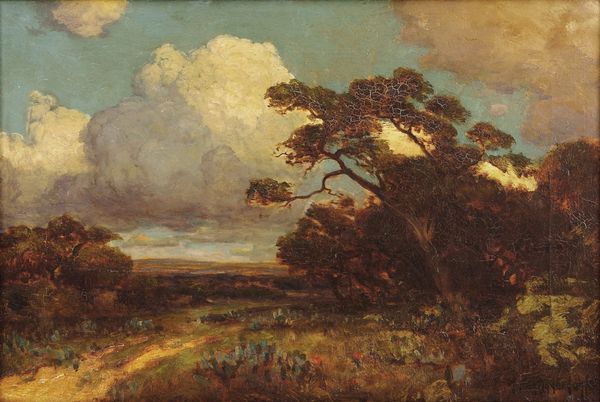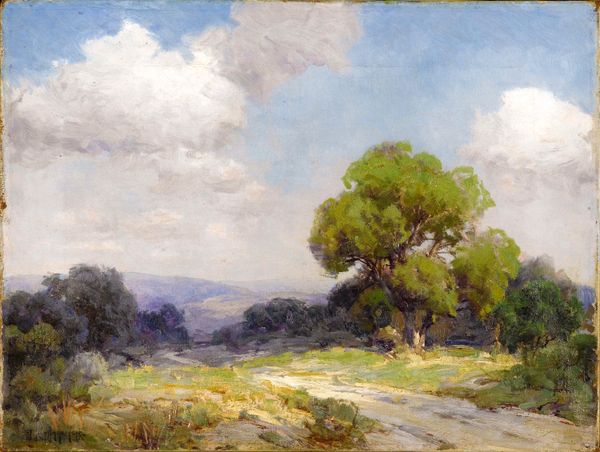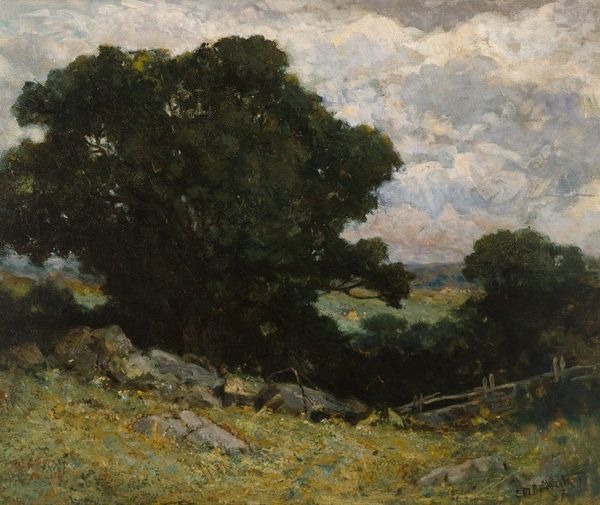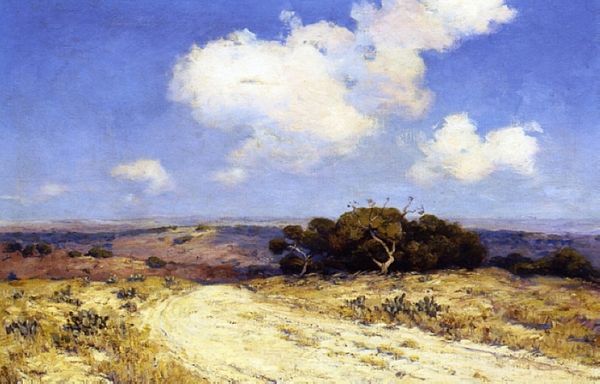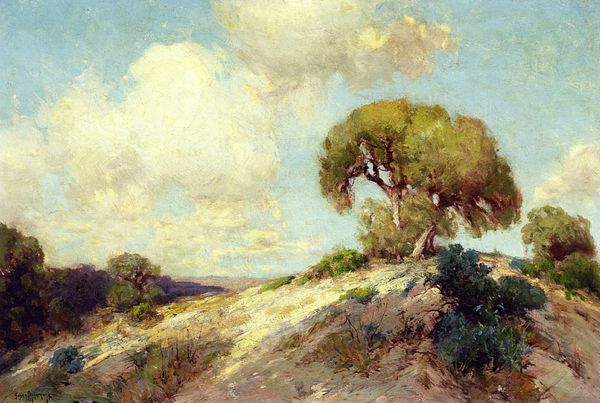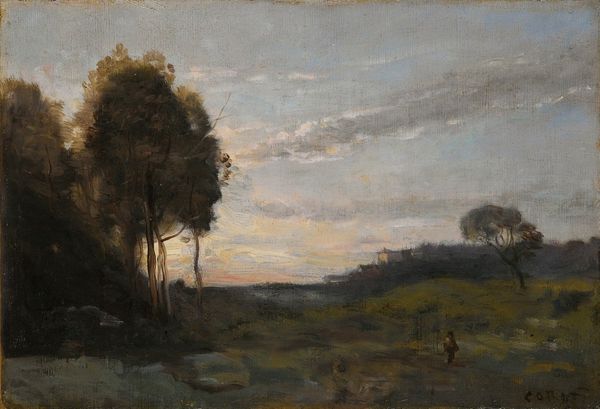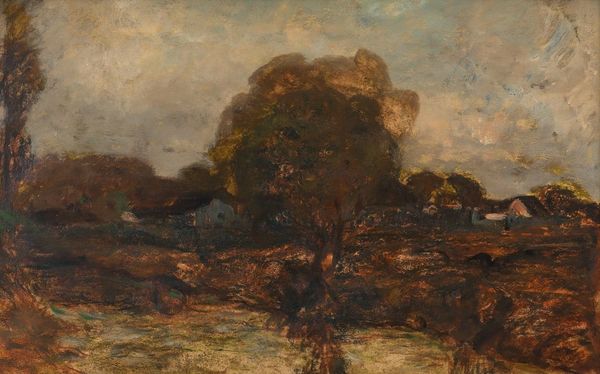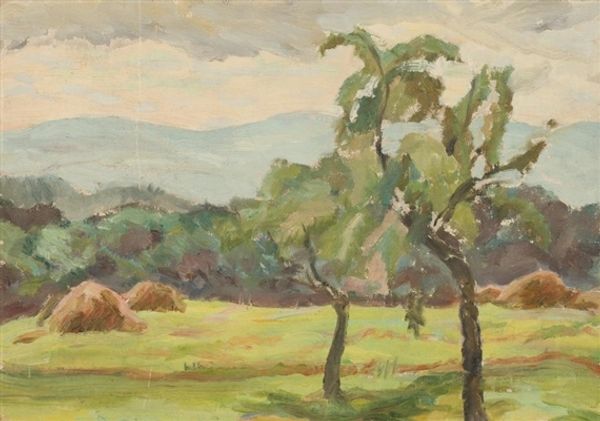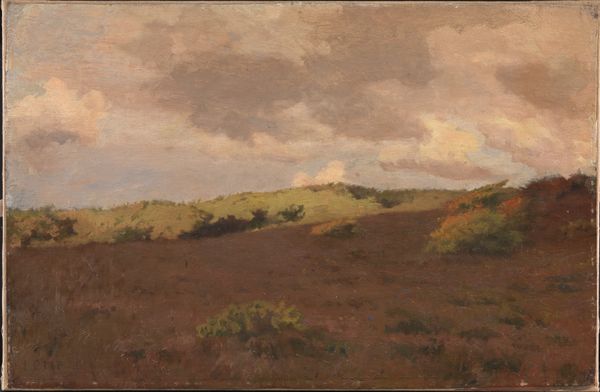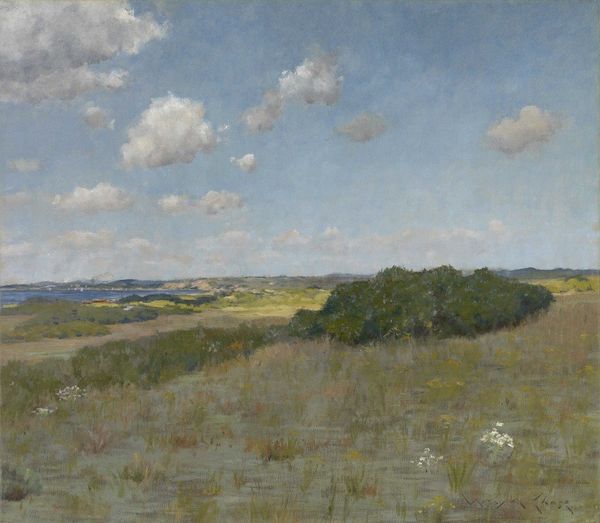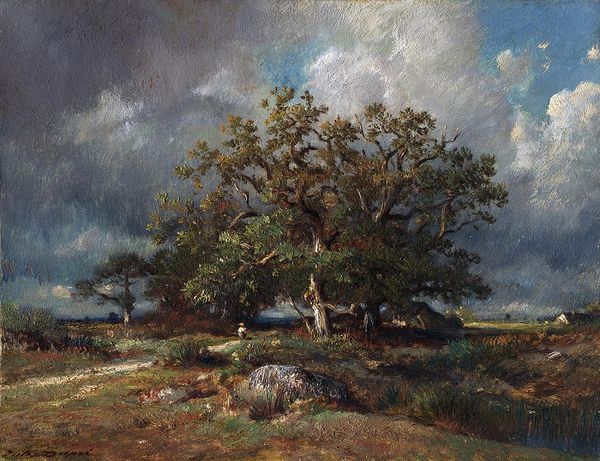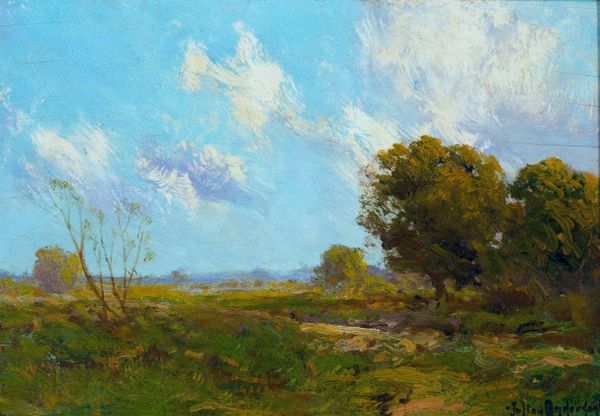
painting, plein-air, oil-paint
#
tree
#
sky
#
painting
#
impressionism
#
plein-air
#
oil-paint
#
landscape
#
impressionist landscape
#
oil painting
#
naturalistic tone
#
realism
Copyright: Public domain
Editor: Here we have Robert Julian Onderdonk's "Texas Dry Country," an oil painting capturing a vast landscape. It feels very impressionistic in its use of light. What strikes you when you look at it? Curator: I am interested in the material realities. Think about the physical act of painting *en plein air* in that Texan landscape. What tools did Onderdonk have available? How did he source his pigments? Understanding that process offers a far deeper context than just "impressionistic light." Editor: So, instead of just appreciating the visual, you want to consider the production? Curator: Exactly. Consider the very term "Dry Country." This is not merely a landscape, it's a working environment. Someone is toiling in that land. We might ask about Onderdonk’s relationship to labor and to the economy of the Texan landscape he is depicting. Was this a commissioned work, or was it painted for personal artistic reasons? What relationship did the artist have to the land? How would a worker, a farmer, see this scene? Editor: That's a totally different angle than I was expecting. It's interesting to think about it as documenting work and resources rather than just an aesthetic scene. Curator: It encourages us to critically examine art historical values; where, when, and why this work exists. Is it reinforcing, subverting, or ignoring societal roles? What’s glorified, what's left out? Consider his technique of broken color and loose brushwork – is this merely stylistic, or a direct response to working quickly in changing natural conditions? The oil paint, the canvas... they all speak to Onderdonk’s place in that material world. Editor: I see what you mean. Analyzing those elements adds another dimension to appreciating it. It's more than just what’s on the surface. Thanks for that! Curator: Absolutely! It shows how understanding the circumstances surrounding a piece’s creation opens so much meaning.
Comments
No comments
Be the first to comment and join the conversation on the ultimate creative platform.
